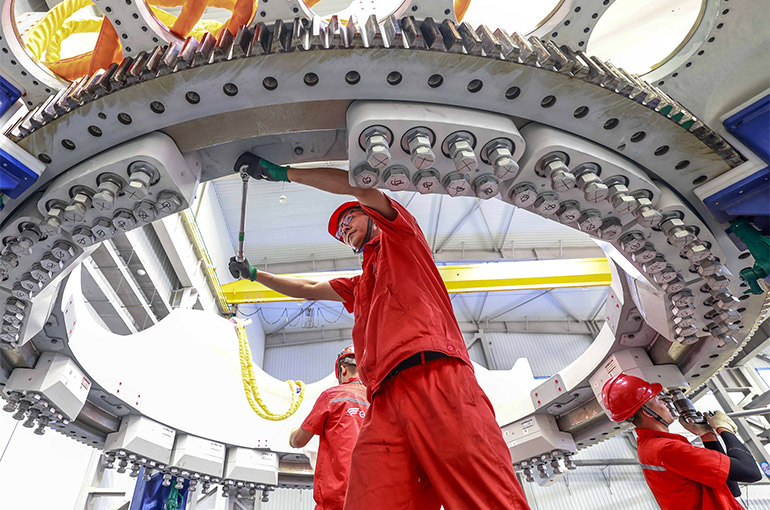 China’s Industrial Production Hits Nearly Four-Year High in March
China’s Industrial Production Hits Nearly Four-Year High in March(Yicai) April 18 -- Industrial production in China surged last month to climb at the fastest pace in almost four years amid government policies to buoy economic growth and deal with external headwinds.
Value-added industrial output jumped 7.7 percent in March from a year earlier, marking the biggest increase since July 2021 and up from a 5.9 percent gain the month before, according to figures released by the National Bureau of Statistics and the Ministry of Industry and Information Technology yesterday.
In the first quarter of the year, value-added industrial output rose 6.3 percent from a year ago, contributing more than 36 percent to the nation's gross domestic product and 2 percentage points to GDP growth.
Among the sub-sectors, manufacturing recorded a 6.8 percent increase, up from 6.2 percent in the previous quarter and accounting for 25.8 percent of GDP, while the construction industry made a more modest 3.1 percent gain.
Large manufacturers of computers, communications equipment, and other electronic devices posted an 11.5 percent surge, 5 percentage points above the average, Xie Cun, director of an MIIT bureau, said at a press conference today.
More than 90 percent of the 41 major industrial sectors reported year-on-year growth in value-added output, while net output rose for nearly 65 percent of the more than 620 industrial products that are monitored.
Wu Chaoming, chief economist at Chasing Financial Holdings, told Yicai that the strong momentum can be attributed to several factors. These include low base effects from last year’s weaker production, government subsidies for large-scale equipment upgrades and consumer goods trade-ins, robust exports, and advances in smart and green manufacturing technologies.
Additionally, continued fiscal support and increased local infrastructure investment have accelerated production amid recovering consumption, Wu noted.
Looking ahead, China will boost the supply of electronic information hardware and software, accelerate the rollout of action plans to stabilize growth in the sector that produces laptops, chips, and servers, and promote tech breakthroughs, according to Xie.
The government also encourages open-source collaboration and the accelerated development of a mutually beneficial software ecosystem, he added.
Xie Shaofeng, chief engineer at the MIIT, said the next step is to advance artificial intelligence across industries. This includes strengthening research and development for general and industry-specific large language models, upgrading manufacturing, improving AI infrastructure, promoting smart tech industrialization, and fostering a favorable industrial ecosystem.
As for broader trends, Wu noted that both existing and upcoming policies are expected to continue supporting industrial production. However, global trade challenges and a shifting external environment may present short-term headwinds.
Wang Qing, chief macroeconomic analyst at Golden Credit Rating International, added that US-led tariff tensions could weaken external demand this month. Nevertheless, China’s strong policy measures to stimulate domestic demand will likely offset some of that pressure, he concluded.
Editor: Emmi Laine